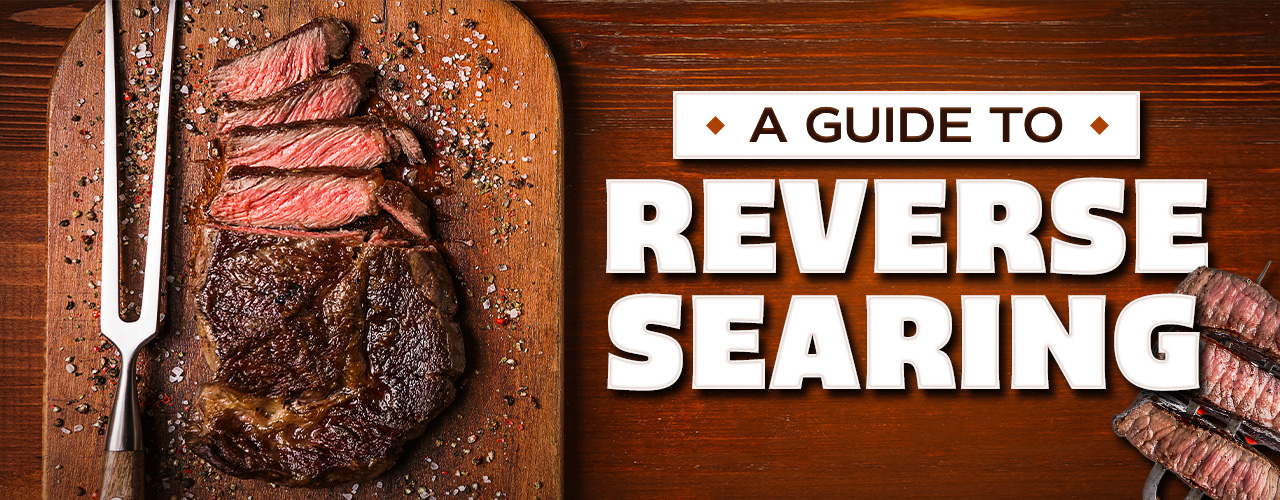The reverse searing technique allows chefs to achieve the perfect sear when cooking steak. Reverse searing involves cooking the steak at a low temperature first, followed by a quick sear on high heat to develop a caramelized crust. This cooking method ensures even doneness throughout the steak, creating a tender, juicy texture with perfectly medium-rare meat. By learning how to reverse sear a steak, you will impress your pickiest customers and affirm the quality of your establishment.
What Is a Reverse Sear?

A reverse sear technique involves cooking a steak at a low temperature in an oven and then searing it over high heat to create a crust. It allows more control over the cooking process by ensuring the steak cooks evenly from edge to edge. Starting with a low and slow roast in the oven cooks the steak gently and helps it retain moisture, resulting in a juicy and tender final product. The high-heat sear at the end adds a caramelized crust that enhances the flavor and texture of the steak.
Reverse searing has many benefits for chefs, including:
- Even cooking throughout the entire steak
- Best browning and crust compared to other cooking methods
- Consistency and control over the steak's doneness
- More tenderness and flavor from the juices and browning process
Reverse Sear vs Sous Vide
Reverse-seared steak and sous vide steak are known for precision with doneness level, but they produce different flavors and textures. Reverse searing produces a better crust after cooking, keeping the exterior moist and flavorful. However, inattention can cause you to overcook the steak and dry it out to the incorrect texture.
Sous vide involves vacuum-sealing and cooking the steak in a water bath at a precise temperature. This method allows for precise control over the cooking temperature and helps retain the natural juices and flavors of the steak, resulting in a moist and tender texture. However, mishandling it after removing it from the water bath makes it difficult to brown, so it often lacks the delicious crust that reverse-searing produces.
Reverse Sear Temperature Chart
Use the following chart to precisely reverse sear a 1 1/2-inch steak according to preferred doneness. Set your oven to 250 degrees Fahrenheit, then monitor your steak with a meat thermometer to ensure it maintains the correct internal temperature.
| Doneness | Target Temperature in Oven | Time in Oven | Target Temperature after Searing |
| Rare | 105 F | 20 - 25 min | 120 F |
| Medium-rare | 115 F | 25 - 30 min | 130 F |
| Medium | 125 F | 30 - 35 min | 140 F |
| Medium-well | 135 F | 35 - 40 min | 150 F |
| Well done | 145 F | 40 - 45 min | 160 F |
Creating the Perfect Reverse Sear Steak

To reverse sear your choice cut of steak, you'll need a neutral oil, butter, salt, pepper, and your preferred herbs and aromatics. Many chefs use fresh garlic, thyme, rosemary, and shallots to enhance the flavor of the meat. You will use a rack and sheet pan while cooking the steak in the oven and a cast iron skillet while searing them on the stove.
- Pat thawed steaks dry with a paper towel, then season both sides with salt and pepper. Refrigerate them uncovered for 2 to 24 hours for a drier surface and better seasoning.
- Preheat your oven to 250 degrees Fahrenheit and set the oven rack to the middle position.
- Place the steaks on a rack, then place that rack in a sheet pan.
- Transfer the steaks to the oven and cook until they reach the desired internal temperature for the desired doneness. Frequently check the internal temperature using a meat thermometer to prevent overcooking. Remove steaks from the oven, tent foil over them to maintain temperature, and set aside.
- Heat a neutral oil with a high smoke point in a cast iron pan on the stove over high heat. Once the oil starts smoking, add the steaks to the pan and sear for 1 to 2 minutes on each side. Sear the edges for 30 seconds to render the fat.
- Reduce the heat to medium-low, then add butter and any additional herbs, garlic, or shallots. Cover the top of the steak with the melted butter and baste for two minutes.
- Transfer the steaks to a clean plate, then let them rest for at least five minutes and serve.
How to Reverse Sear a Steak Video
Check out the video below for a step-by-step process on how to reverse sear a steak:
The reverse sear method is ideal for achieving perfectly cooked steaks in commercial kitchens. By starting with a low and slow cook in the oven and finishing with a quick sear on a hot grill or skillet, chefs can ensure that their steaks cook evenly and to the desired level of doneness. Whether you serve ribeye, filet mignon, or New York strip steaks, mastering the reverse sear technique will elevate your steak dishes and impress your customers.



